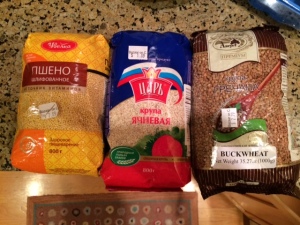As a basketball player and high jumper, I racked up 10 stress fractures over the course of 8 years. Upon hearing this, acquaintances often ask, “oh, did you not get enough calcium?” Actually, I did. Doctors checked my blood, my calcium levels were normal. So were my vitamin D levels. I always came back slowly from these injuries as well – they never seemed to heal in the 4-6 week timetable my doctors would allot, even in college with the help of athletic trainers and physical therapists. I would always ask the doctors, what am I doing wrong? They could never answer. So I eventually did my own research, and, as it turns out, I was doing quite a bit wrong. This will be a four part series focusing on the role that diet has on bone strength and development:
Part I: The Milk Myth
Part II: What Matters Most – How Calcium is Absorbed
Part III: Where to get the required minerals to maximize calcium absorption (listed in Part II) – Foods, Herbs & Supplements
Part IV: The Bone Builder’s Cookbook – Several Easy Recipes
Part III:
If you read parts I & II of my “Bulletproof Bones” series, you’ll notice that I talked a lot about the minerals involved in getting calcium into your bones (not your bloodstream) and keeping it there. The following are the best sources of bone-building magnesium and other minerals. #1 is at the top, the rest are in descending order:
#1: Cracked Bone Soup. I did a post on this a week ago where you can read up on the bone and joint building benefits of this bone soup. Is commonly made from chicken, beef, or fish. Follows the ancient healing principle of “like heals like” – the animal has concentrated bone building vitamins and minerals in their bones. Humans need the same nutrients, so we benefit greatly from this food.
#2: Pumpkin Seeds. Power-packed with magnesium, with around half of your daily requirement in just a quarter cup serving. Also rich source of zinc and antioxidants.
#3: Beans. Lentils, Soy, mung, adzuki, black, and lima beans are all great sources of magnesium, as well as protein and other beneficial vitamins and minerals.
#4: Whole Grains. Especially quinoa, buckwheat, brown rice, wild rice, barley, millet, oats, rye and wheat (in descending order of magnesium content, from whfoods.com).
#5: Green Vegetables. Chlorophyll makes plants green, and at the center of the chlorophyll molecule is magnesium, making these guys a great source as well.
Note: Much ado has been made in health circles about the phytic acid content of beans and whole grains, with some (usually paleo…) people advocating that we leave them completely out of our diet for that reason. Phytic acid is one of the ways a plant avoids being eaten – it is a toxin whose intent is to render the plant inedible, by binding to vital nutrients and rendering them unusable by whatever animal were to try and eat them. However, research has shown that the body produces its own chemicals to break down phytic acid. I personally soak grains the night before I use them (just put ’em in a mason jar and let ’em sit on the counter covered in water, then drain the water and put it in the fridge, preferably use it within a few days – soaking is as simple as it sounds) because it breaks down phytic acid to a negligible amount by beginning the sprouting process (during which the plant’s nutrients are most bio-available). I first read about soaking grains in Paul Pitchford’s “Healing with Whole Foods,” a book on western and eastern nutrition. Since so much of Traditional Chinese Medicine’s nutritional recommendations are focused on getting the most nutrients possible while wasting as little of the body’s energy as one can to assimilate those nutrients, I feel that soaking is worthwhile. I usually place a lot of faith in traditional wisdom, due to its strong track record (our survival). I feel I get less of a dip in energy (less food coma) immediately after I eat soaked grains (vs. non-soaked). Could be placebo though…You decide. As for beans, soaking DEFINITELY makes a difference by reducing the content of particular sugars that upset your stomach.
Part IV:
Minimal Work Recipes
There are more complex recipes out there, but if you’re just starting with cooking, on a budget, or lacking a full kitchen’s worth of ingredients, then these will do just fine.
Chicken Broth/Stock
Dahl (Lentil Curry): bring 3-4 cups water to a boil. Add 1 cup soaked lentils. Simmer until soft, then add a tablespoon of curry powder OR turmeric, cinnamon, ginger, cayenne and coriander (all powerful anti-inflammatories, especially turmeric), add salt to taste, and cook 5-10 more minutes.
Gretchka (made with Kasha, which is simply toasted buckwheat): boil 3 cups water, add 1 cup Kasha and salt to taste, simmer for ~20 minutes, add a sliver of butter and parsley if desired, cook another 5-10 minutes (until the water is soaked into the buckwheat – 1 cup of buckwheat will look alarmingly bigger after cooking!) Millet can be made this way as well (though I don’t often include butter with millet, as it is creamy in texture as is). Wild rice and brown rice are similar as well, although wild rice will take more like 45 minutes. I will often sauté a vegetable in olive oil or butter on the pan, then add water to boil, then add grains – adds veggies to the meal, and flavors the grain! I like mushrooms with buckwheat, onions with lentils or rice, broccoli with millet – this addition is something worth experimenting with.
From Bazaar on Cambridge St. in Allston, MA, a primarily Russian grocer – Millet is $2.89, Barley $1.89, and Kasha $2.79 for 22 servings – that’s less than 13 cents per serving for a food nutritious enough to be a staple of one’s diet – they said eating healthy was expensive, did they?
Finally, to bring it all together I have a recipe a client gave me last week – this one is a little more involved, but since it uses a crockpot/slow cooker it is super easy.
(Slow Cooked) Sweet Potato, Black Bean & Quinoa Soup
Ingredients:
1.5 lbs boneless skinless chicken breasts*
1 cup quinoa (soaked)
2-3 sweet potatoes, depending on their size
1 can black beans (rinsed) OR equivalent of a can (~1 pound) dried black beans soaked and then cooked somewhat (boil, 20-30 minutes simmer)
2 big tomatoes
1 teaspoon minced garlic
5 cups chicken broth – since I make my own broth, I’ll often cut it with water, i.e. 3 cups broth, 2 cups water – my broth is much more flavorful than store bought broth
Chili Seasoning – 1 tbsp chili powder, 1 tsp ground cumin, 1 tsp salt, 1/2 tsp onion powder, 1/4 tsp cayenne powder, 1/4 tsp garlic powder, 1/4 tsp freshly ground pepper – you can use this ratio to make a bunch of chili seasoning for use in other dishes, storing for up to six months
Instructions:
Pour in liquid – broth or combo broth/water
Add in chicken, quinoa, rinsed beans
Peel sweet potatoes (or not, if you’re as lazy as I am) cut into cubes and add to pot
Dice tomatoes and garlic and add to pot
Add chili seasoning to pot
Place on high for 3-5 hours or low for 5-8 (I do high for 4.5 hrs)
Use two forks to shred chicken, stir & serve
*Note: I often skip the chicken if I’m cooking for myself, replacing it with another pound of black beans or adzuki beans – I don’t eat meat more than a few meals a week. Why I do this will be discussed in future posts.
Bon appetit!




